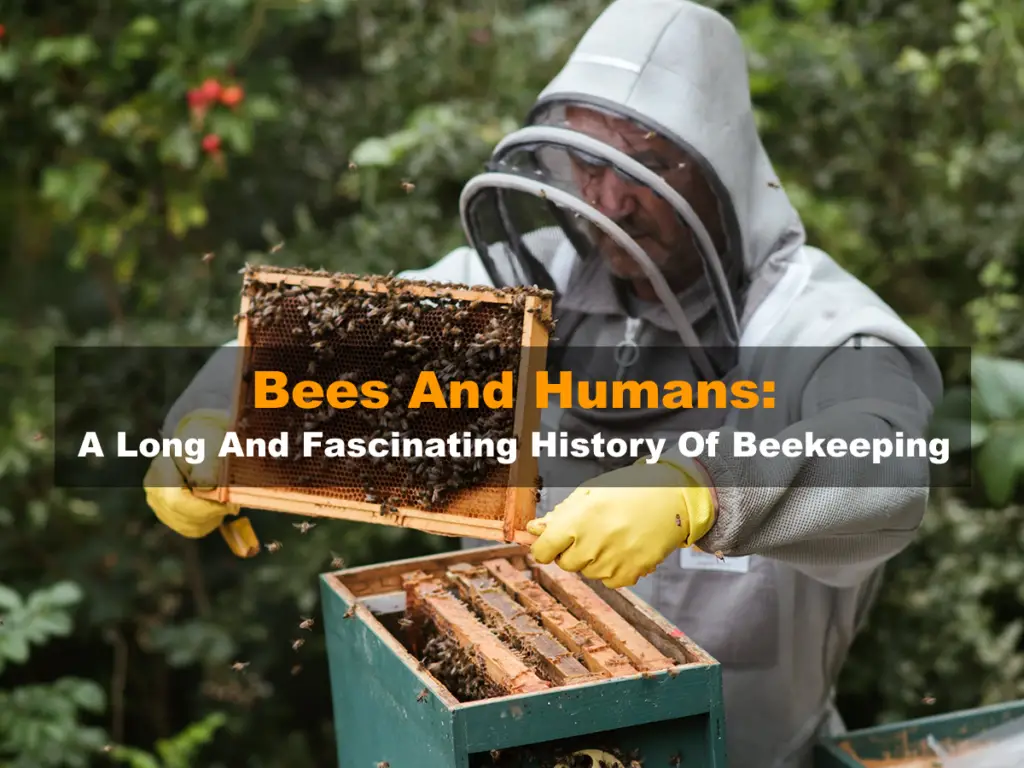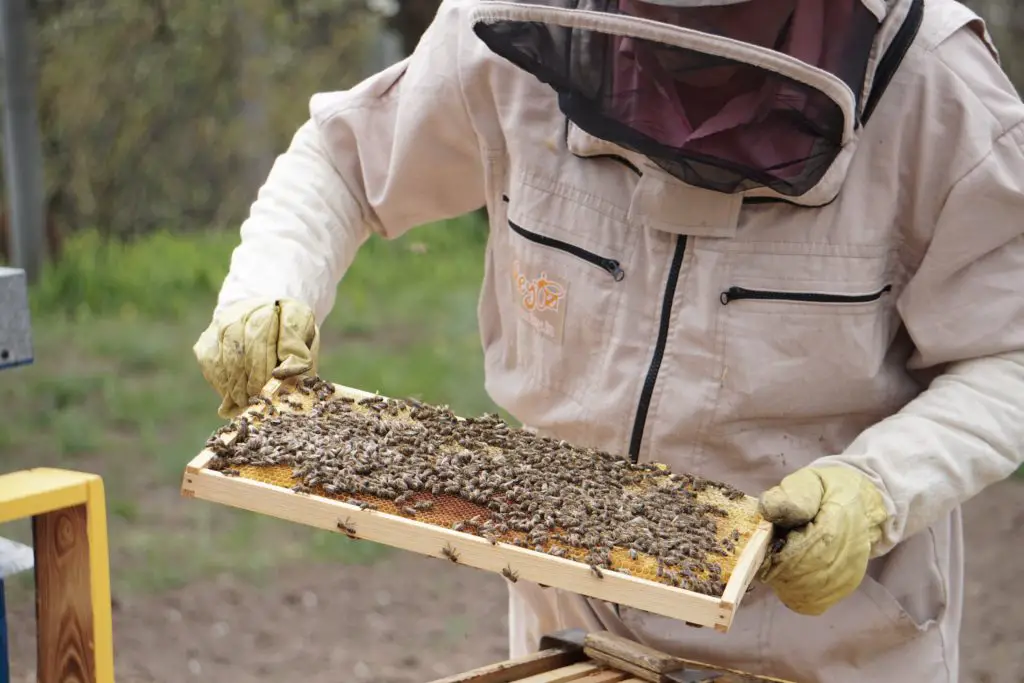Affiliate Disclaimer - As an Amazon Associate I earn from qualifying purchases.
It supports the website. So, Thank you
It’s thought that there are around 81 million managed beehives in the world – that’s a lot of beekeepers. But this is far from being a modern hobby or business venture and if we look back at the history of beekeeping, we begin to see that even thousands of years ago, humans saw the importance and benefits of looking after a hive.
So, when did beekeeping start?
While the first commercial beekeeper set up shop in the early 1800s, there is evidence in the form of cave drawings that suggests humans have been keeping bees for 10,000 years or more.
I’m sure the techniques used back in those days were a far cry from what the modern beekeeper employs but it’s a fascinating subject, nonetheless. It’s something I wanted to explore a little more so I’ve done some research and present you with the history of beekeeping and how long it’s been around.
Table of Contents
How Long Have Humans Kept Bees?
Before we look at how long humans have been looking after bees, we have to put it into perspective in terms of how long bees have been on the planet. There is some dispute around this but it’s thought that honey bees have been around for at least 40 million years with some fossils pointing towards a 150 million-year timeline.
When we look back over history, there is evidence that shows humans have had a long association with bees. Cave drawings depict humans consuming honey and using wax and these are thought to have been made more than 10,000 years ago.
In Spain, there are other drawings showing similar images which have been dated around 7000 years old. These images show some kind of beekeeping but it’s nothing like what we are familiar with today. One of these images, from Cuevas de la Arana en Bicorp, shows a man harvesting honey which historians claim to come from the year 8000 BC.
The Most Ancient Form Of Beekeeping
While it appears that humans have been working with bees for many thousands of years, it wasn’t until around 5000 years ago that we can actually give beekeeping a real start date.
This happened in ancient Egypt and is more in line with how we understand beekeeping today. In ancient Egyptian drawings, we see an activity that involves a hive, managed by humans with the sole purpose of harvesting honey.
If you’ve ever seen drawings from this time period, you’ll know how detailed they are and it isn’t just depictions of men harvesting honey but drawings of some of the gear they would have used. This includes things like honeypots and even men smoking beehives!
It’s thought that, in ancient Egypt, beekeepers would transport their hives in order to keep up with the seasons; not something that’s seen in modern beekeeping.
The Egyptians really took honey seriously and many of them were buried with honey. During archaeological digs, there have been findings of tombs that contained perfectly preserved honey, further adding to the notion that this is the only edible source in the world that doesn’t go bad.
It seems as though the Egyptians were really onto something because, over the years, beekeeping began to get more and more popular in neighboring Europe and Asia as well as in other parts of Africa. However, it wasn’t until 1840 that North America saw its first commercial beekeeper, Moses Quinby. But that shouldn’t come as much of a surprise as it wasn’t until the discovery of America and Australia that Europeans introduced the first honey bees.
Modern Beekeeping – The Beginnings
As I’ve mentioned, it wasn’t until European explorers discovered America that honey bees were even introduced here. In fact, they were first imported to South America back in 1538 by the Spanish. Back in those days, people weren’t even aware of how bees produced honey and they certainly didn’t realize that they collected nectar from flowers. Humans were under the belief that bees collected ready-made honey from flowers and it wasn’t until 1700 that this was finally corrected.
But the form of beekeeping that we know and love today didn’t really come into fruition until the late 18th century. Before this, bees would be used for their honey in summer and then keepers would kill them at the end of the season, ready to harvest, not realizing that they could get another yield from the colony year after year.
In Europe, beekeepers would burn sulfur and hold this at the entrance of the hive, effectively suffocating the bees within. However, it was apparent that this was hardly an efficient method of beekeeping and it wasn’t long before people started to question it and come up with alternative methods that wouldn’t harm the bees.
That’s where Thomas Wildman came in with his invention of a new hive that allowed the keepers to extract honey without killing any bees. This didn’t happen until 1770 but the general design of these hives isn’t all that dissimilar to what we see today. But further amendments to the beehive design were made in the mid-1800s by Lorenzo Lorraine Langstroth who added removable frames.
With this invention, beekeepers were now able to remove a frame at a time, giving them far more control. On top of this, beekeepers began to notice how much calmer and happier their colonies were, so it was a win-win for beekeepers and bees! Much more than this, hive management became easier with access to monitor the condition of the queen, check for disease, and other things.
Final Thoughts
Beekeeping isn’t something that modern man invented. There’s a suggestion that it began around 10,000 years ago but the practices back then were vastly different to today.
If you’re asking yourself when did beekeeping start, you’ll want to look back to the ancient Egyptian times when the first documented evidence of beekeeping as we might recognize it today was made.
But the activity has grown and developed over the years and it wasn’t until around 200 years ago that the hives we see today first came into play.




